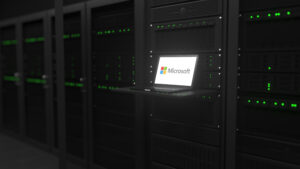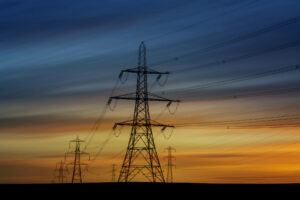Western Europe’s supplies of oil and natural gas are currently under significant strain in the wake of the Russian invasion of Ukraine. Although Britain is not reliant on Russian gas, importers are exposed to the knock-on effects amid the fallout from the conflict. In its Winter Outlook Report, the National Grid Electricity System Operator has warned that in the “unlikely event” that insufficient gas supply coincides with reduced electricity imports from continental Europe, it could be forced to implement planned, temporary blackouts to manage demand. John Pettigrew, The National Grid chief, said that blackouts will have to be imposed in January and February 2023 if electricity generators don’t have enough gas to meet demand, especially if there is a period of cold weather. We have seen energy risks previously arise from sustained periods of low wind (reducing renewable energy from wind farms) and unplanned outages in fossil fuel with nuclear power stations thereby reducing their output.
Dr Robert Macfarlane has described (during crisis management training) a theory from Reason (1997) called the swiss cheese model whereby analyses of major accidents and catastrophic systems failures tend to reveal multiple, smaller failures leading up to the actual hazard. When the stars (or more accurately swiss cheese slices) align, the failures and fragilities combine to cause a significant incident or crisis for an organisation. In this period of ‘omnicrisis’, a pandemic phrase of ‘all being in the same boat in the same storm’ has now shifted to us being in different boats in different areas of a storm system; some organisations are weathering the storm, relatively immune to some of the political, energy, protest, cyber and personnel risks whilst others are now struggling to maintain and improve their resilience, battered and buffeted by each event.
Rolling three-hour outages
In accordance with the Electricity Supply Emergency Code (ESE Code), these planned outages are expected to take the form of rolling, three-hour “disconnections”, in which consumers in particular areas would be given a day’s notice that they would lose power. However, the length and frequency of any blackouts and the amount of notice that will be given to consumers ultimately remain unpredictable.
Under the ESE Code, businesses can apply in advance to their regional network operators to be designated as “Protected Sites”, however, most employers will not be able to meet these tests and so will remain affected by planned blackouts.
Preparation and planning is key
Faced with the looming prospect of planned power outages, businesses should give serious consideration to business continuity planning to identify any steps that can be taken to minimise disruption. The practical impact will vary hugely depending on industry and sector as well as the frequency and timing of planned outages but at the very least, ensuring the resilience of IT servers and systems must be a priority for most businesses.
A Microsoft spokesperson said the company is actively monitoring the situation, and the resulting impacts to countries where it operates data centre regions. “In the event of energy restrictions, we will comply with all government requirements to reduce demand on the energy grid,” they added. “We will take the necessary steps to help reduce the burden on local utilities, while working to ensure minimal disruption to our customers and their workload running on the Microsoft cloud.”

Steps for creating a power outage business continuity plan
There are several elements that should be included in your power outage business continuity plan:
- A list of critical systems and processes that need to be maintained during a power outage
- A list of backup power generation options, including generators and battery backups (noting that fuel supply/re-supply may be at a premium in a wide area outage)
- Protocols for customer communication – including basic contact information for key clients
- Protocols for employee safety including evacuation procedures and alternate ways of working; noting the heavy dependence for many workforces on home/hybrid working – the fragility of the mobile network, length of time that fibre to the cabinet and fibre to the premises will last during an outage, let along laptop batteries and home consumables mean that some key staff may need to be located at more resilient locations if your organisation has generator backup or work area recovery options and assigned desks available on key days.
- A plan for mitigating financial losses, including a check of insurance coverage and contingency funds
- A plan for recovering lost data and files
Implementing a full business continuity plan can seem like a daunting prospect if you don’t have the expertise already in-house. Here are some simple, practical suggestions to get started:
 1. Invest in standby generators to maintain power supply for critical equipment.
1. Invest in standby generators to maintain power supply for critical equipment.
2. Look at what elements of your operations in the cloud are mission-critical to business continuity. Prioritise what workloads and applications are really key.
3. Ask home-working employees who are affected by a blackout and are able to, to come into the workplace, if it remains unaffected and transport is possible.
4. Encourage employees to keep their devices fully charged while working from the office or from home, especially if prior notification of a blackout has been received
5. Consider adjusting working times or shift patterns to accommodate a planned blackout.
6. Ensure employees have downloaded any key documents that would enable them to work without the internet. Provide advice on how to use mobile data for a Wi-Fi hotspot.
In November we joined forces with Conductrr for an interactive workshop exploring the impact of energy crises on business continuity, providing you with the opportunity to consider your company’s response in a live simulation environment. The event was hosted by the BCI click here to enter your details to view a free recording of the session and view the slide deck here.
Do you need help developing a business continuity arrangement for ‘omnicrisis’? Get in touch today by emailing support@controlledevents.com or calling +44 (0)20 3286 6392


